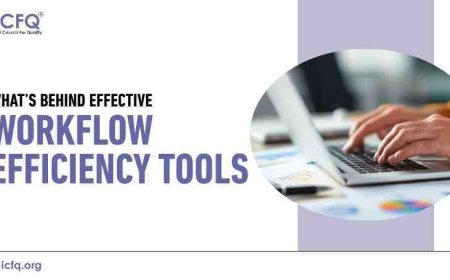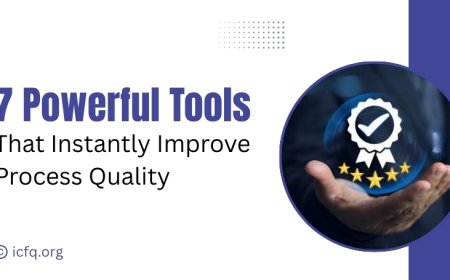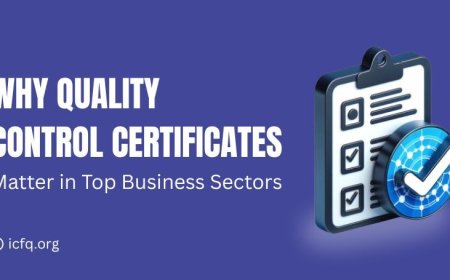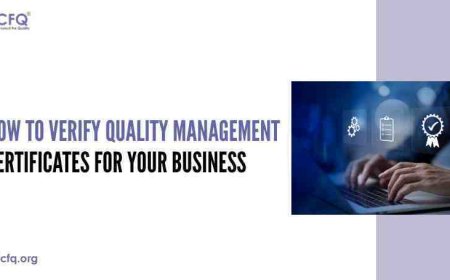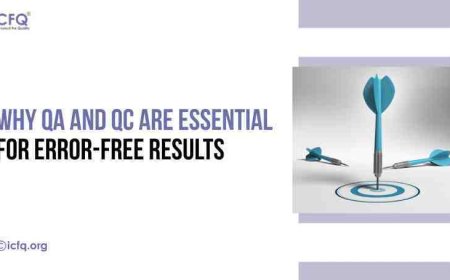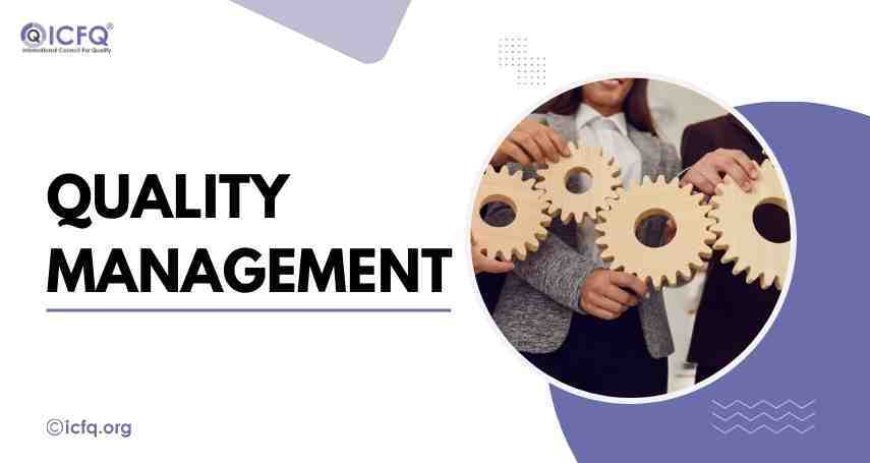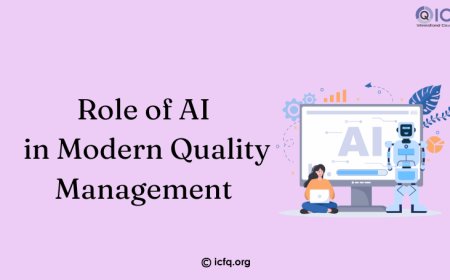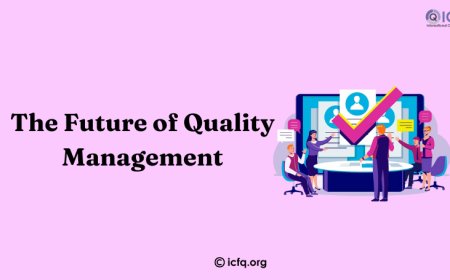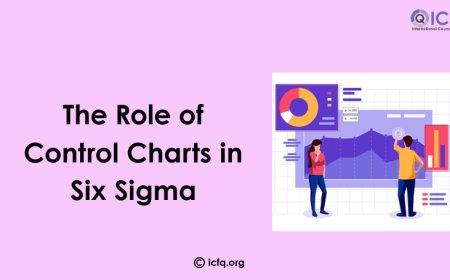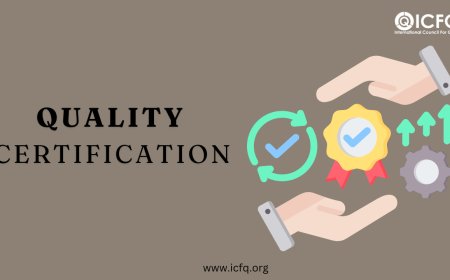Quality management is a systematic approach that organizations employ to ensure that their products, services, and processes consistently meet or exceed customer expectations. It involves a set of principles and practices aimed at maintaining and improving the quality of products and services throughout the entire production or service delivery cycle. Quality management encompasses various DMAIC methodologies, standards, and tools that help organizations monitor, control, and enhance the quality of their outputs.
Importance of Implementing Quality Management
Quality management is a strategic imperative for organizations, offering a myriad of benefits that directly contribute to their success and sustainability. Prioritizing the implementation of quality management provides organizations with a competitive edge and fosters a culture of continuous improvement. Here are key reasons why organizations should prioritize quality management
Implementing Quality Management is important for businesses for several reasons
- Customer Happiness: It ensures that what a company delivers meets or exceeds what customers expect, making them happy.
- Beating the Competition: By focusing on quality, a business can stand out from its competitors, attracting more customers.
- Saving Money: Catching and fixing problems early in the process avoids costly mistakes and unhappy customers later on.
- Getting Better: Quality Management helps a business improve over time by always looking for ways to improve.
- Following the Rules: Many industries have rules and standards; Quality Management helps companies follow them, avoiding legal trouble and bad publicity.
- Good Reputation: A commitment to quality builds a good reputation, which attracts more customers and keeps the current ones happy.
- Avoiding Problems: Quality Management helps identify and solve problems before they become big issues, reducing risks for the business.
- Happy Employees: It creates a work environment where employees feel good about their work, leading to better results.
- Smart Choices: Quality Management uses data to make smart decisions, helping the business improve over time.
- Loyal Customers: Consistently delivering quality builds trust and keeps customers coming back, which is good for the business in the long run.
Factors Affecting Quality Management
Here are some common challenges in Quality Management
- Changing Requirements: Keeping up with changing customer needs and market trends can be a challenge. Adapting to new requirements while maintaining quality standards requires agility and responsiveness.
- Resource Constraints: Limited resources, both in terms of budget and personnel, can hinder the implementation of robust quality management systems. Allocating sufficient resources to quality initiatives is often a balancing act.
- Consistency Across Processes: Ensuring consistent quality across various processes, especially in large organizations with diverse operations, can be challenging. Standardizing practices becomes crucial but may encounter resistance.
- Employee Resistance: Employees might resist changes associated with Quality Management, viewing them as additional work or disruptions to established routines. Overcoming this resistance requires effective communication and training.
- Balancing Cost and Quality: Striking the right balance between maintaining high-quality standards and controlling costs is a perpetual challenge. Cutting costs indiscriminately may compromise quality, while overspending may affect the bottom line.
- Complex Supply Chains: Organizations with intricate supply chains face ensuring quality at every stage. Dependencies on external suppliers make it vital to establish effective quality control measures throughout the supply chain.
- Technological Integration: Implementing new technologies for quality management, such as data analytics and automation, can be challenging. Integrating these technologies seamlessly into existing systems requires careful planning and investment.
- Measuring Intangible Aspects: Some aspects of quality, like customer satisfaction or brand reputation, can be challenging to measure objectively. Developing reliable metrics for these intangible aspects is crucial for effective quality management.
- Cultural Shift: Establishing a quality-focused culture throughout an organization may require a significant cultural shift. Getting everyone on board with a quality mindset demands leadership commitment and effective change management.
- Continuous Improvement: Sustaining a culture of continuous improvement is challenging. Organizations may need help with complacency after achieving a certain level of quality, hindering ongoing efforts to enhance processes.
Lean and Six Sigma Principles
Lean and Six Sigma are two complementary methodologies that organizations often integrate to achieve efficiency and quality improvements. Each methodology brings unique principles and tools to the table, and when combined, they create a powerful approach to process optimization. Let's explore how Lean and Six Sigma principles contribute to efficiency and quality improvement:
- Lean Principles:
a. Elimination of Waste: Lean focuses on identifying and eliminating various forms of waste in processes, such as overproduction, waiting times, unnecessary movement, and defects. By minimizing waste, organizations streamline processes and enhance efficiency.
b. Continuous Improvement (Kaizen): Kaizen, a key Lean concept, emphasizes continuous incremental improvement. This involves employees at all levels actively seeking ways to enhance processes, fostering a culture of continuous learning and optimization.
c. Value Stream Mapping: Lean uses value stream mapping to visualize and analyze the entire process from end to end. This helps identify areas of improvement, eliminate bottlenecks, and ensure that each step in the process adds value from the customer's perspective.
d. Pull System: Lean promotes a pull system where production is based on actual customer demand rather than pushing products through the production process. This minimizes excess inventory and ensures that resources are used efficiently.
e. Just-in-Time (JIT): JIT production aims to minimize inventory levels by producing items only as they are needed. This reduces storage costs, and the risk of obsolescence, and enables a more responsive and efficient production system. - Six Sigma Principles:
a. Define, Measure, Analyze, Improve, Control (DMAIC): Six Sigma follows the DMAIC framework, a structured approach for process improvement. It involves defining the problem, measuring key aspects, analyzing data, implementing improvements, and establishing controls to sustain improvements.
b. Statistical Analysis: Six Sigma relies on statistical tools and analysis to identify root causes of defects and variations in processes. This data-driven approach helps organizations make informed decisions about process improvements.
c. Process Capability: Six Sigma aims to enhance process capability by reducing variations and ensuring that processes operate within specified limits. This results in more predictable and consistent outcomes, contributing to higher quality.
d. Customer Focus: Six Sigma places a strong emphasis on understanding and meeting customer requirements. By aligning processes with customer expectations, organizations can deliver products and services that consistently satisfy customer needs.
e. Black Belt, Green Belt, Yellow Belt: Six Sigma employs a certification system with belts representing different levels of expertise (e.g., Black Belt, Green Belt, Yellow Belt). This ensures that individuals across the organization have the necessary skills to contribute to process improvement initiatives.
Combining Lean and Six Sigma:
-
Synergy: Lean and Six Sigma complement each other by addressing different aspects of process improvement. Lean focuses on efficiency and waste reduction, while Six Sigma targets variations and defects.
-
Speed and Precision: Lean's emphasis on speed aligns well with Six Sigma's focus on precision. Together, they create a balanced approach that achieves both efficiency and quality.
-
Comprehensive Improvement: Integrating Lean and Six Sigma provides a comprehensive strategy for organizational improvement, covering a broad spectrum of processes and addressing both systemic issues and variations.
-
Cultural Transformation: The combination of Lean and Six Sigma often leads to a cultural transformation within an organization. The principles instill a mindset of continuous improvement, data-driven decision-making, and a focus on customer value.
The integration of Lean and Six Sigma principles offers organizations a holistic and effective approach to achieving efficiency and quality improvement. By combining the strengths of both methodologies, organizations can optimize processes, reduce waste, enhance customer satisfaction, and foster a culture of continuous improvement.
Steps to Develop a Quality Management System
Developing a Quality Management System (QMS) is a strategic initiative that organizations undertake to ensure that their products or services consistently meet or exceed customer expectations. Here is a step-by-step guide to help in the development of a Quality Management System:
-
Define the Scope and Objectives: Clearly define the scope of your QMS. Identify the processes, products, and services that will be covered. Establish specific objectives for the QMS. These objectives should align with organizational goals and customer requirements.
-
Engage Leadership: Gain the commitment of top management. Leadership support is crucial for the successful development and implementation of the QMS. Ensure that leadership communicates the importance of the QMS throughout the organization.
-
Conduct a Process Analysis: Identify key processes within the organization. This includes processes related to product/service realization, support processes, and management processes. Use tools like process mapping to visualize and understand the flow of activities and interactions.
-
Develop Documentation: Create a set of documented procedures and work instructions for key processes. This documentation serves as a reference for employees and auditors. Develop forms and records to capture relevant data and information.
-
Implement a Document Control System: Establish a system for controlling and managing documents. This includes version control, access permissions, and a process for document approval and review. Ensure that employees have access to the latest, approved versions of documents.
-
Training and Competence: Identify training needs for employees involved in QMS processes. Implement a training program to ensure that employees are competent in performing their roles.
-
Risk Assessment and Mitigation: Conduct a risk assessment to identify potential risks to the achievement of quality objectives. Develop and implement mitigation strategies to address identified risks.
-
Monitoring and Measurement: Establish key performance indicators (KPIs) for monitoring the performance of processes. Implement a system for collecting and analyzing data to measure conformity to requirements and the effectiveness of the QMS.
-
Implement a Non-Conformance and Corrective Action Process: Develop a process for identifying and addressing non-conformances. This includes customer complaints, internal audit findings, and other instances where the QMS is not followed. Implement a corrective action process to address root causes and prevent the recurrence of non-conformances.
-
Internal Audits: Conduct internal audits to assess the effectiveness of the QMS and identify opportunities for improvement. Ensure that audit findings are documented and addressed through the corrective action process.
-
Management Review: Schedule regular management reviews to evaluate the performance of the QMS. Use management review meetings to assess the continuing suitability, adequacy, and effectiveness of the QMS.
Quality Management Tools and Techniques
- Flowcharts: Visual diagrams that show the steps in a process. Useful for understanding how things work and finding areas to improve.
- Check Sheets: Simple forms to collect data systematically. Helpful for organizing information, especially when you're manually recording data.
- Pareto Analysis: Focuses on the most critical issues (the "vital few") by identifying the factors that have the most significant impact on a problem.
- Cause-and-effect diagrams: Visual maps help find the root causes of a problem by showing relationships between different factors.
- Control Charts: Charts that track how consistent a process is over time. Useful for spotting unusual variations and taking corrective action.
- Histograms: Graphs that show the distribution of data, helping you see patterns and understand the performance of a process.
- Scatter Diagrams: Graphs that display the relationship between two variables. Useful for spotting trends and cause-and-effect connections.
- Benchmarking: Comparing your processes and performance with the best practices in your industry. Helps identify areas for improvement.
- Statistical Sampling: Selecting a representative part of a group for inspection or testing. Useful for making informed decisions about the entire group.
- Quality Function Deployment (QFD): A method to turn customer requirements into specific product or service features. Ensures what you deliver aligns with what customers want.
- Six Sigma: Techniques and tools for reducing defects and variations in processes. Follows a step-by-step process (DMAIC) for improvement.
- Root Cause Analysis: A methodical process for finding the main reasons behind problems or defects. The "5 Whys" is a simple technique - keep asking why until you get to the root cause.
Benefits of Implementing Quality Management
Implementing Quality Management can bring about several benefits for an organization. Here are some key advantages
-
Customer Satisfaction: Quality Management ensures that products or services meet or exceed customer expectations. This leads to increased customer satisfaction, loyalty, and positive word-of-mouth, which can, in turn, attract new customers.
-
Improved Reputation: Consistently delivering high-quality products or services enhances the organization's reputation. A positive reputation can be a valuable asset, attracting more customers and building trust in the market.
-
Cost Reduction: Quality Management helps identify and eliminate process inefficiencies and defects. By addressing the root causes of issues, organizations can reduce costs related to rework, waste, and warranty claims.
-
Increased Efficiency: Through the implementation of quality management principles, processes become more streamlined and efficient. This can result in faster production times, quicker delivery, and overall improved operational performance.
-
Employee Engagement: Involving employees in quality improvement processes fosters a sense of ownership and pride in their work. Engaged employees are more likely to contribute innovative ideas, leading to continuous improvement.
-
Compliance and Risk Management: Quality Management systems often include measures to ensure compliance with industry standards and regulations. This not only reduces the risk of legal issues but also demonstrates a commitment to ethical business practices.
-
Decision-Making Improvement: Quality Management provides organizations with data-driven insights. This enables better decision-making based on accurate information, fostering a culture of continuous improvement.
The implementation of Quality Management is a strategic imperative for organizations seeking sustained success in a competitive world. By prioritizing quality, businesses can ensure customer satisfaction, beat the competition, and save costs in the long run. Quality Management not only contributes to a good reputation but also helps in avoiding problems, complying with industry standards, and fostering a culture of continuous improvement. The benefits of implementing Quality Management, including increased customer satisfaction, improved reputation, cost reduction, and enhanced employee engagement, underscore its pivotal role in organizational success.





